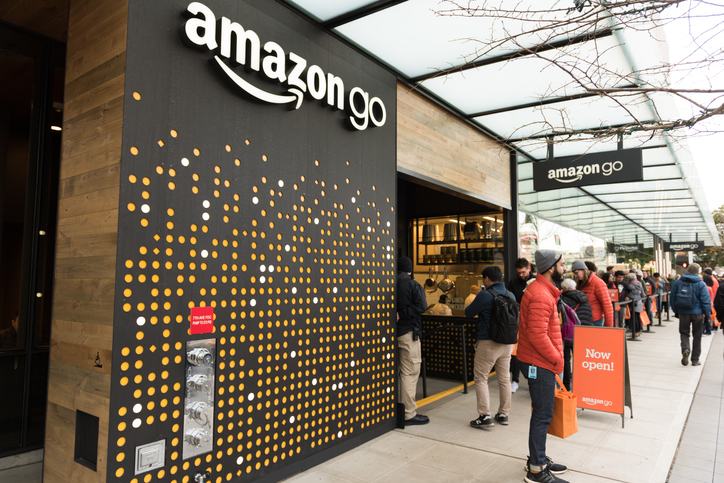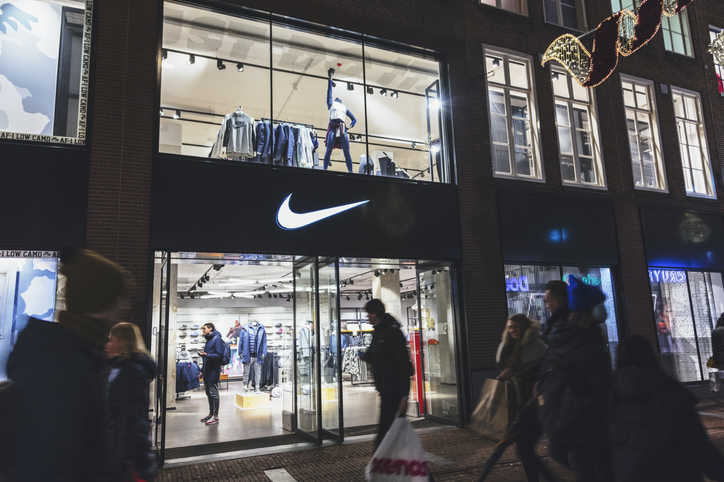
Digital brands strive to make a personal connection

It didn’t take long for a major theme to emerge out of the NRF Retail’s Big Show in New York this year. A provocative keynote by Sucharita Kodali, a Vice President and Principal Analyst at Forrester, set the tone for the conference and retail expo when she pointed out that 2018 has seen the strongest growth in physical stores in the last six years. What’s even more interesting is where she says the growth in physical stores is coming from—e-commerce retailers.
The 2019 NRF Retail’s Big Show is a marketplace for ideas, offering retailers the opportunity to forge new partnerships and learn from some of the biggest players transforming retail today. The event, which was held this year in New York from January 13-15, attracted 37,000 attendees, 16,000 retailers and more than 700 exhibitors representing 99 countries. The conference attracts a “who’s who” from the retail sector. This year’s line-up included speakers from industry leaders like Walmart, Macy’s, ThirdLove, Levis Strauss, UNTUCKit, Lowe’s, Warby Parker and Rodan + Fields, to name a few.
Here are some highlights from the conference:
1. Cross channel (click-to-bricks)
 |
| An Amazon Go Store in Seattle |
Click-to-bricks is the phenomenon where online-only retailers are setting up shop in brick-and-mortar locations, typically by setting up a smaller-scale store or using either a seasonal or pop-up model. Amazon is one of the biggest disrupters in this space. The retail juggernaut has grown with cashierless “Go” stores, Amazon 4-star (in NYC), approximately 300 Whole Foods locations and, more recently, its partnership with Kohl’s to establish a store-within-a-store.
Innovative digital brands like Warby Parker, Allbirds and others are opening physical stores as part of their strategic initiatives. Traditional brick-and-mortar brands aren’t sitting still either. They’re adjusting their strategy to make room for new store concepts within their stores. Macy’s deal to acquire STORY is a good example of this. Through this deal, Macy’s plans to bring a new experience to consumers every three to eight weeks around a new theme or trend.
IKEA’s acquisition of Taskrabbit is another example of traditional, brick-and-mortar retailers snapping up e-commerce upstarts and integrating them into their operation. This deal has led to a more seamless in-store experience, increased basket size and greater loyalty as consumers save time and turn to Taskrabbit to assemble their IKEA purchases.
Physical stores are still thriving, although consumers use them in different ways. For instance, between 30 percent and 40 percent of total online spending is returned back to physical stores. They also allow a shopper to see and feel a product before purchasing it—one of the biggest drawbacks of the e-commerce environment.
The combination of bricks and clicks is extremely appealing to consumers, giving them more choices for their overall shopping experience. Retailers are finding that consumers who shop both online and in-store channels are their most valuable shoppers. By linking retail customer data (store, e-commerce, high-value shoppers) with a proven segmentation system, retailers can gain insights about customer demographics, lifestyles, preferences, attitudes and values, as well as insights on where they live. This will help inform the way retailers engage those customers, and “like-minded consumers” to target.
2. Mobility
The Big Show included a lot of talk around mobility analytics and the ways consumers continue to use their mobile devices to support the store experience. When they are in-store, they compare prices while looking up product information and reading reviews. Mobility analytics offers an affordable way to understand movement patterns of your store’s visitors and your competitors’ visitors over the course of a day, week or year, as well as for those important promotional periods. This is extremely valuable for retailers who can gain competitive insights, including size and shape of trade area, cross-shopping information and visitor profiles. By integrating mobility insights with geodemographic data, retailers can identify the segments of their customers who are likely to defect to their competitors. This can jump-start a campaign to retain them with products and messaging that they value.
 |
| A sample of a Mobility Analytics Time of Day analysis |
3. Data security and privacy
Consumers demand both transparency and accountability from retailers and brands. Best-in-class retailers focus on transparency, so that consumers can trust that they’re pursuing only the data they need and that they’re using and storing that data responsibly. These retailers are empowering consumers to know where and how their data is being used and making it clear what they will get in return. Gone are the days when consumers will provide information without a clear benefit back to them as part of the value exchange.
Privacy and data security have become a primary focus for both customers and retailers. As personal shopper data, loyalty data and payment information increase in value, the more a retailer must do to protect that information and develop policies and systems to collect and use it in a responsible way. Customers demand increased security and have expressed concern around the use of their personal information. According to a RetailMeNot Consumer Survey, 17 percent of consumers don’t want to share any of their data, while nearly 60 percent of consumers, especially wealthy shoppers, say that they worry about retailers knowing too much about them.
Environics Analytics has always made data privacy and security a priority. Our range of comprehensive databases—including demographics, consumer buying behavior, competitive shopping data, media consumption, psychographics and more—are modeled to small geographic areas (e.g. zip plus 4, zip plus 6), which means we do not need our retail partners to disclose any personal identifiable information, such as names of their customers. All that is required is ZIP code and, if practical, city, region or address to more accurately assign segments. Given that, we can append more than 30,000 data variables to a client file with outstanding results. Even our mobility data is anonymized to protect privacy.
From a security standpoint, Environics Analytics is compliant with multiple attestation standards issued by the American Institute of Certified Public Accountants (AICPA), which reports on the controls that support our services. These certifications, combined with our stringent data governance policies, ensure that our clients have peace of mind when working on their data-driven initiatives with us.
4. Personalization
There was a strong focus on the balance between privacy and personalization at the 2019 NRF Retail’s Big Show. The consensus is that it is important to collect relevant information that saves consumers time and effort, provides those data are collected in a privacy compliant and fully consented way. For example, Men’s Warehouse captures and stores its customers’ measurements, which saves customer time each time they shop with them. Likewise, Cover FX maintains records on its customers’ shade match. In the quest to deepen one-to-one relationships and personalize the customer experience, retailers are ensuring that their customer databases are accurate and up to date, with meaningful customer data and third-party data appended to enhance their insights. The result is a better customer experience and personalization of content and messaging.
5. Experiential bricks and mortar and pop-up stores
 |
| A Nike Sports Fashion Store in Amsterdam, Netherlands |
According to a 2018 Industry Insights report by the International Council of Shopping Centers, 70 percent of consumers say malls should focus on “creating engaging experiences that combine shopping, entertainment and other services/activities.” Retailers are finding creative ways to stimulate purchase intent and convert sales through experiential retail as well as pop-up stores. Experiences that draw customers to retail locations include high-value services like makeover or personal shopping, community-building through classes and events—“Retailtainment” (entertaining in-store experiences).
Nordstrom, Converse and Nike stood out at the 2019 NFR Big Show. Nordstrom Men’s opened April 2018 in NYC and includes services such as 24-hour same day delivery to certain ZIP codes, reserve online, try on in-store for key clients, express returns, style boards to provide customers with access to stylists, alterations, customization and more. Nike and Converse are starting to do more to integrate the digital and in-store experience, such as allow customers to customize their shoes and clothing. Other leaders in this space include Reformation, ULTA and Starbucks Roastery Reserve.
Pop-up stores allow brands to create a personalized, high-touch experience while keeping costs such as long-term leases in check. They also allow retailers to go wherever the customers are located. Instead of being forced into specific retail locations, the retailer can match products with the personality of a given shopper demographic and go there―then move as needed to try out different markets and shopper segments.
6. A new analytic approach and AI
The model for how to best deploy analytics capabilities, staff analytics resources and build data platforms to support both has evolved. C-suite executives are more than ever, involved in decision making around operationalizing data (data capture, management and transformation, and business intelligence), employing advanced analytics (customer segmentation, scoring, forecasting), and creating exceptional customer experiences (personalization, digital engagement).
In the world of data and analytics, we are moving into the era of artificial intelligence, machine learning, and intelligent automation as priorities to leverage data to drive decisions and make processes more efficient. Retailers are starting to embrace AI and are evaluating new technologies. Walking the floor of the NRF 2019 Retail’s Big Show, were numerous examples of AI coming to life. Still, the hype around AI has exceeded the adoption levels, so leading retail experts don’t see it being a major factor in 2019. Retailers need to see proven ROI and quantifiable, repeatable results before taking the plunge and investing heavily.
AI is also reliant on high-quality data inputs. For example, from a retail personalization perspective, AI enables a curated shopping experience online. Imagine two different shoppers visit an e-commerce site and receive completely different and tailored experiences, from personalized product recommendations to personalized pricing and offers. This is only possible if the data exists on the shopper and their prior behavior on the site. For those cases where past sales history is limited, high quality third party data can fill the gaps very effectively. Take another example of a retailer who is expanding stores and wants to develop a sales forecasting model. Executives are investing millions of dollars in new store openings so it is critical to the success of these stores to ensure that quality data and best practices for human experience/expertise be front and center, based on the local market characteristics.
***
As retailers look towards priorities for investment in 2019 and beyond, the message remains clear. Echoing executives from Home Depot and Target, the retailers that will thrive will be those that understand the consumer and provide them with an exceptional experience based on their needs. While data will grow and continue to help understand consumers needs and drive decision making, the human connection remains imperative.
________________
Tracey Matchett is a Group Account Director with Environics Analytics who primarily focuses on retail sector.

